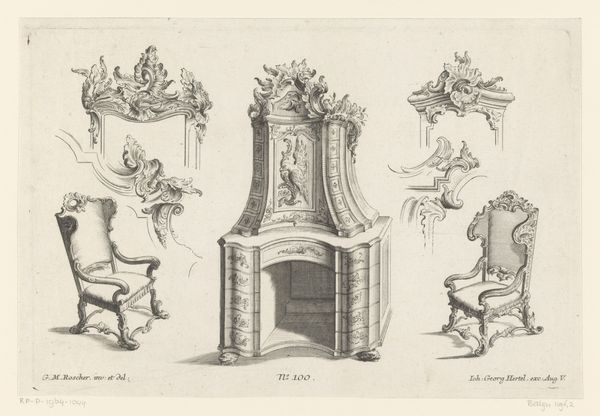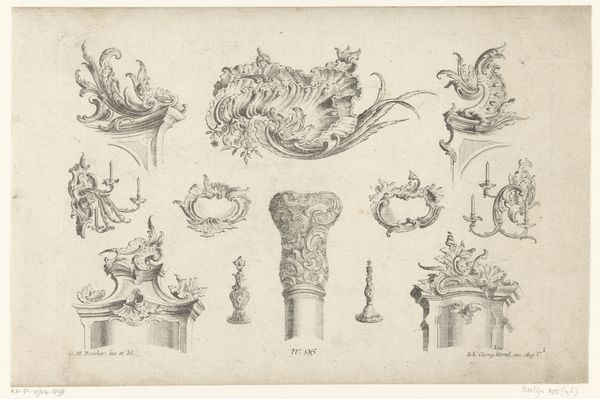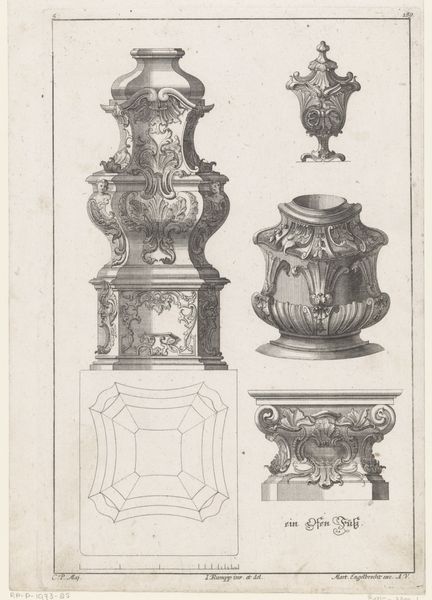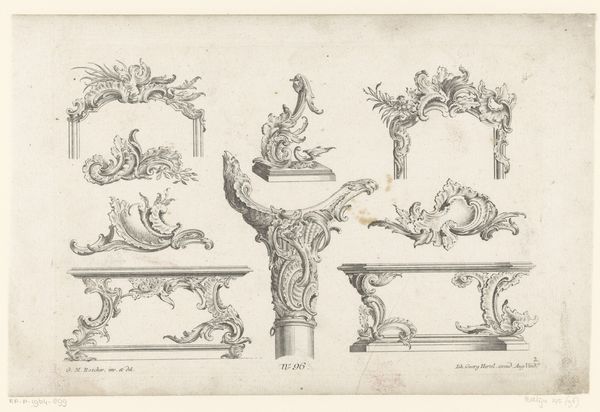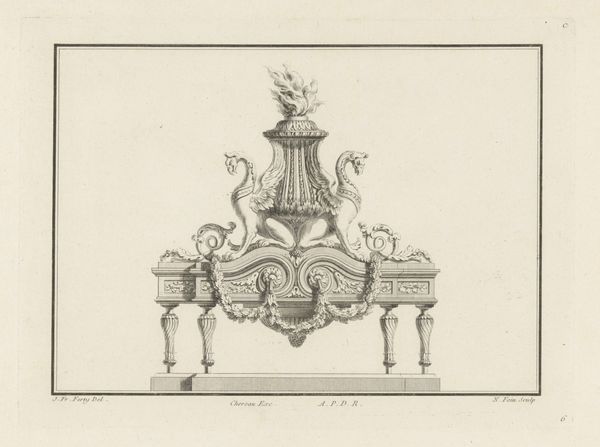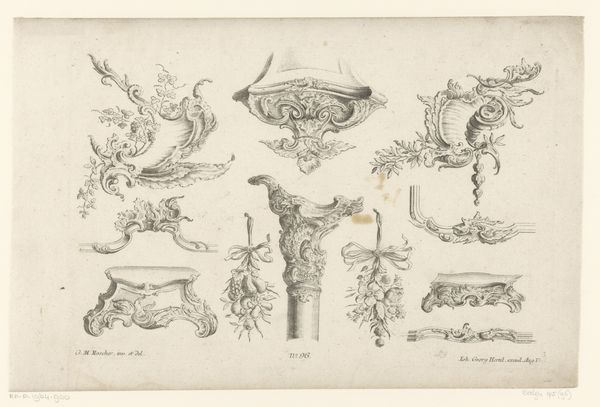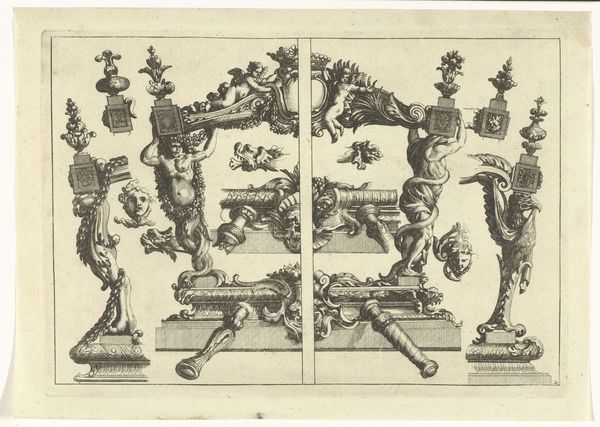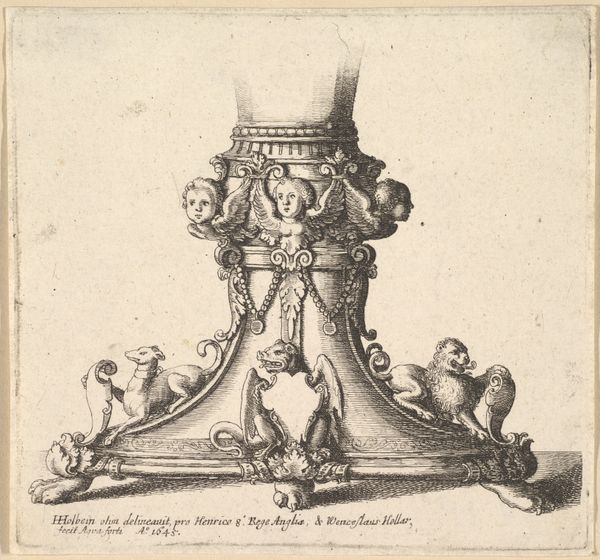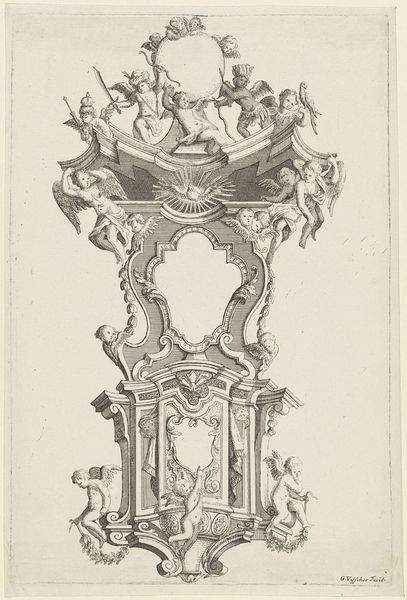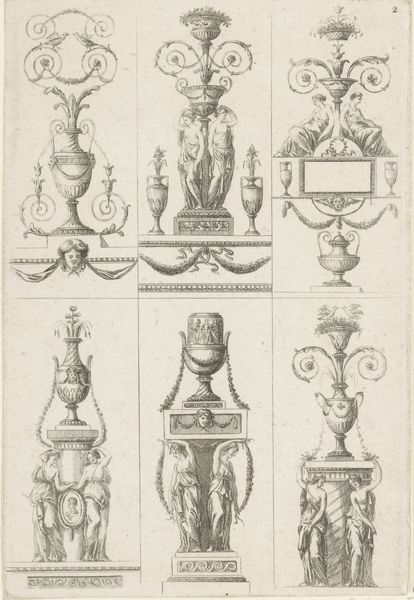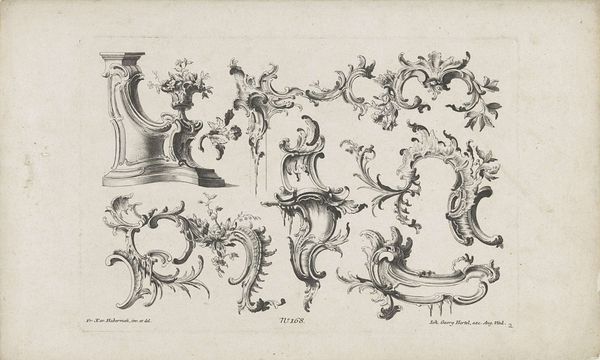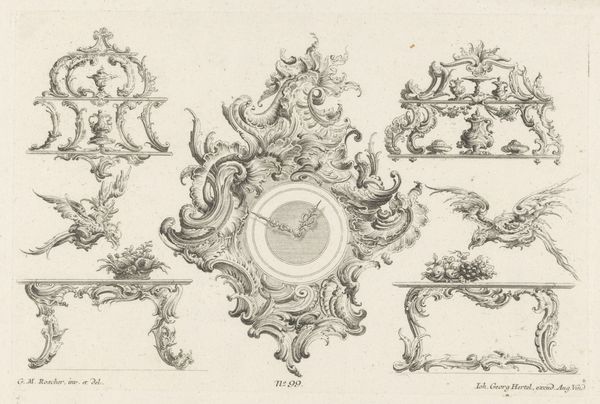
drawing, engraving
#
drawing
#
baroque
#
pen illustration
#
pen sketch
#
furniture
#
engraving
Dimensions: height 200 mm, width 301 mm
Copyright: Rijks Museum: Open Domain
Curator: I find myself immediately drawn to the incredibly elaborate detail. Each piece, from the chests to the chairs, is practically overflowing with ornamentation. Editor: We are looking at a print titled "Kast en twee stoelen," or "Cabinet and two chairs" dating to sometime between 1705 and 1775. The piece, whose maker is anonymous, is currently held at the Rijksmuseum. It's an engraving rendered with pen, offering designs for Baroque furniture. Curator: Baroque! The ornamentation speaks to that era with its exuberance, which also embodies ideas about class. How the wealthy enjoyed displays of abundance and their access to artists. It all felt meant to visually overwhelm you with richness. Editor: Exactly. Furniture like this served a distinct social function beyond mere utility. Consider the placement, the implied interior: how the politics of the court would manifest itself in even a private residence. And it became a status symbol available for public consumption. The wealthy elite would demonstrate wealth to solidify their social power and reinforce the social hierarchy of their society, literally displaying your status in a performative sense. Curator: And what a visual feast, down to the ornate little corner pieces, each reflecting larger societal tastes and trends in interior design. Each line of ornamentation can almost act as its own micro-narrative, reflecting tastes and ideals. You know, the swirls are incredibly organic to me. And I notice the chair backs remind me, in their shape and form, of swans. Or rather, feathers! Editor: Fascinating interpretation! I’m more focused on the implied consumer; designs like this contributed to a culture of aspiration and desire, shaping social norms through everyday objects and reflecting it too. It created a feedback loop as design styles evolved with class, trends, materials. This image doesn't just reflect taste; it actively shapes it, helping establish visual languages for societal ambitions. Curator: So, this seemingly simple drawing reveals a whole network of symbols, ideas and social history. Even furniture isn't just functional. It speaks volumes! Editor: Indeed, these weren’t simple objects, but powerful emblems deeply intertwined with the social and political fabric of the era.
Comments
No comments
Be the first to comment and join the conversation on the ultimate creative platform.
